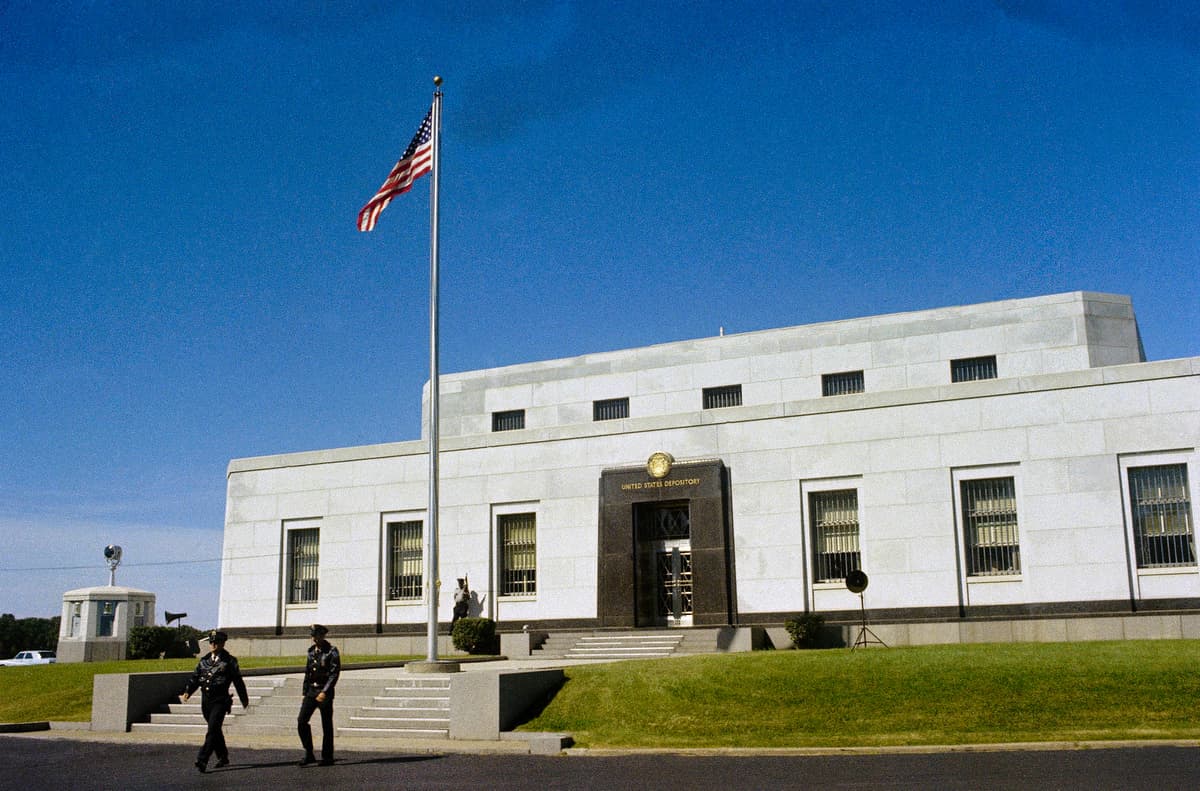The Coming Raid on Fort Knox
Talk is starting in the new administration about selling the gold in America’s vaults.

The news today is that the incoming Trump administration is hearing talk about selling the gold at Fort Knox. Our advice is to get on the phone right now and call Edwin Vieira, Jr., author of the definitive volume “Pieces of Eight.” That’s what we did last time we heard talk — it was in Congress — about selling the gold at Fort Knox. When he came to the phone we asked him, “Ed, do you think America should sell the gold in Fort Knox?”
“Don’t use the word SELL,” Mr. Vieira exploded over the blower.
He was so alarmed we almost dropped the phone. Then we asked what was the problem.
“You don’t sell gold,” Mr. Vieira said “You SPEND it.”
We got the point, but Mr. Vieira pressed it anyhow. “Don’t you see,” he boomed. “Gold is the money.”
The talk today of selling gold is part of a proposal to rectify the imbalances in global trade, like China’s record-high surplus. It is part of the president-elect’s America First policy. Among the more creative suggestions being floated was spotted by our Ira Stoll at The Editors. The idea, put forward some weeks ago by Trump’s pick to head the Council of Economic Advisers, Stephen Miran, is to deploy America’s gold reserves to devalue the dollar.
Gold reserves tend to bolster the value of currencies. Yet Mr. Miran sees selling gold — of which Uncle Sam holds some 260 million ounces — as a means to weaken, not strengthen, the dollar. “While many analysts believe there are no tools available to unilaterally address currency misvaluation, that is not true,” he writes. One way to do it, Mr. Miran says, is to “accumulate foreign exchange reserves,” boosting the value of other nations’ fiat currencies.
Here’s where gold factors in. “The Gold Reserve Act,” he writes, allows the Treasury “Secretary to sell gold” in the way “the Secretary considers most advantageous to the public interest.” Mr. Miran sees this as “providing additional potential funds for building foreign exchange reserves.” Note, though, the emphasis on the verb “sell,” the use of which reflects a misconception about the nature of money.
This point was marked in 2013 by a Sun editorial headlined “Speaking of Money.” The editorial was prompted by talk in the press about the “value” of gold. “To the ears of a copy editor of the Sun, this is like the screech of chalk pushed the wrong way on a blackboard,” we noted. That’s because, in the Sun’s stylebook, “the value of gold is, in practical terms, constant.” More noteworthy is “the value of the dollar. That’s what does all the changing.”
So the Sun does not refer to “the price of gold” but the “value of the dollar,” which, incidentally, stands at less than a 2,600th of an ounce in today’s trading. Gold, not the dollar, “is the measure of value.” Plus, too, when it comes to gold, the Sun eschews using the verb “to sell.” That’s in contrast to the idea that “gold is a ‘commodity’ or an ‘asset,’” we noted. “This fits fine in an era of fiat money.” Hence Mr. Vieira’s brilliant point.
Which brings us back to Mr. Miran’s proposal to devalue the dollar by “selling” gold. He concedes it “could be politically costly,” even if it would “result in income” for Uncle Sam. Mr. Stoll reckons that the “problem” with Mr. Miran’s idea is that even if politicians “try to fix prices, there are free-market signals, such as the price of the dollar against gold, Bitcoin, groceries, or real estate, that eventually provide a true indication of a dollar’s value.”
Mr. Miran sees “a reduction in the value of the dollar” as helping “create manufacturing jobs in America” as it “reallocates aggregate demand from the rest of the world to the U.S.” Mr. Stoll replies that if Americans “get the idea that their dollars will be worth less” due to Trump’s moves, “there’s a risk that they will move money out of dollars and into other assets.” Inflation would ensue. Mr. Stoll calls it “a costly policy, in whatever units it is measured.”

